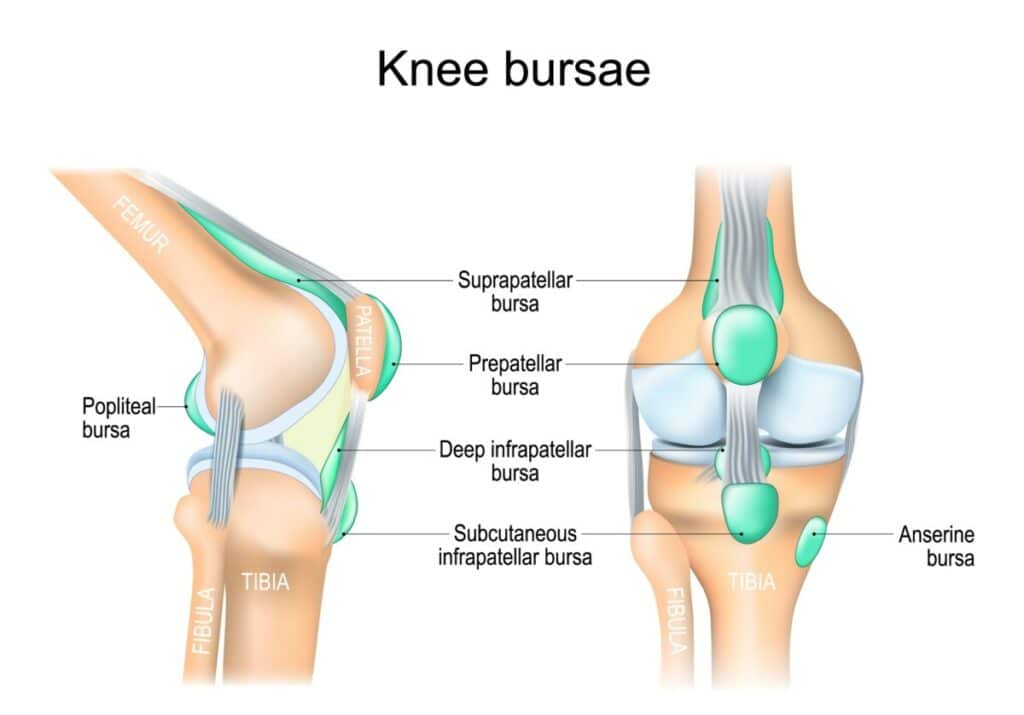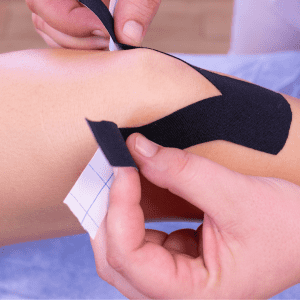Knee Fat Pad Impingement
- Best Asics Shoes for Flat Feet - October 25, 2024
- Best Running Shoes for Flat Feet - October 22, 2024
- Posterior Tibial Tendonitis - October 21, 2024
Knee pain can be debilitating. One of the primary causes of knee pain on the front of your knee is fat pad impingement. Several other conditions on the anterior knee can be painful, such as kneecap arthritis, Patellar tendinopathy, housemaid’s knee, and patellofemoral pain syndrome. In this article, we will explore all about Knee Fat Pad Impingement.
What is a Knee Fat Pad?
A fat pad is an anatomical structure that is made up of adipose tissue. There are three primary fat pads within the knee joint, although the most important one is the Infrapatellar fat pad (Hoffa’s Fat Pad), located at the front of the knee just beneath the knee cap. The anterior location of the fat pad makes it one of the possible structures responsible for anterior knee pain.
What is the function of a knee fat pad?
A knee fat pad within the knee joint provides shock absorption and load distribution across numerous structures around the knee joint, such as the menisci, tendons, cartilage, and ligaments.
Hoffa’s fat pad impingement
This name is commonly given to infrapatellar fat pad syndrome, named after the first scientist to study this condition. An “impingement” is generally the result of an anatomical structure being compressed between two bony structures.
In this case, the highly innervated infrapatellar fat pad gets compressed between the knee cap and the lower end of the femur. This can come as a result of hyper-mobility (knee hyperextension can commonly cause fat pad impingement), prolonged static postures in knee flexion or knee extension, and tight muscles (for example, the quadriceps and the calf).

Causes
The fat pad anatomically sits between the kneecap and the lower part of the femur. Irritation of the fat pad can occur due to direct trauma to the knee, such as a fall. Other causes include overuse injury of the soft tissue around the knee due to repeated knee extension or flexion, generally known as fat pad impingement.
It should be noted that the fat pad is a highly innervated structure. Therefore, high pain levels are common. Patients often describe their pain as a dull ache to sharp intense pain.

Treatment
After establishing the contributing factors for the Hoffa fat pad impingement, the goal is to offload the area and settle down symptoms. Treatments include:
- Icing (ice works well as an anti-inflammatory)
- Taping (applied to relieve some pressure and reduce inflammation)
- Stretching is integral to treatment when fat pad impingement results from tight calves or quadriceps muscles.
- Once the acute stage has resolved and the pain has settled, exercise therapy becomes critical to load the surrounding tissues, which may become de-conditioned as a result of pain and inhibition from a fat-pad impingement. Strengthening exercises generally involve hip and knee joints, although hip-dominant exercises are generally preferred.
- Orthotics may also be beneficial if there are biomechanical abnormalities in your gait pattern, which could irritate the fat pad.
Other treatment options
Should a course of physiotherapy not fully resolve your symptoms, injections from a Sports Medicine Doctor may also have a role in reducing pain from a fat pad irritation.
Typically, injections utilise a combination of corticosteroids and lidocaine. Should this not resolve your pain, a consultation with an orthopaedic surgeon may be appropriate to consider surgical management.
__________________________________
We are specialists in treating foot conditions such as arthritis in the big toe joint and have experts in knee conditions in our clinic in Fulham, South West London. We also run a specialist Biomechanics and Custom Orthotics Service.
Related Articles:
We offer Private Physiotherapy via Online Appointments for £60 and Face-to-Face appointments for £85 in our clinics.
